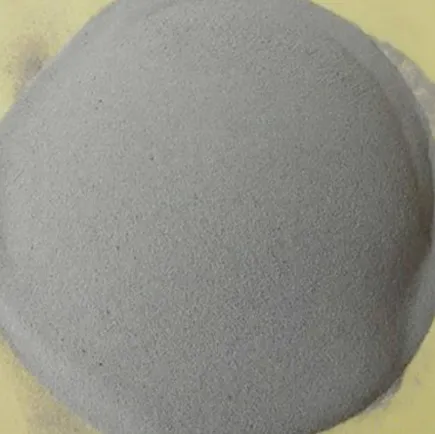Ceramic Microsphere, As a spherical ceramic material with a particle size between micrometers, it plays an increasingly important role in the field of materials science due to its unique physical and chemical properties and wide application prospects. From reinforcing agents for advanced composite materials to carriers for drug delivery, and then to adsorbents for environmental remediation, Ceramic Microspheres have demonstrated strong application potential, leading the development direction of micro nano materials.

The uniqueness of Ceramic Microsphere is first reflected in its spherical shape
This highly symmetrical structure endows it with excellent fluidity and uniformity, enabling it to achieve better mixing and distribution when used as a filler or dispersed phase, avoiding stress concentration and thus improving the overall performance of the material. For example, in polymer based composite materials, the addition of Cenosphere Fly Ash can significantly improve the material's hardness, wear resistance, and thermal shock resistance, while its spherical shape ensures the material's processability.
The composition and structure of Ceramic Microspheres have great controllability
By selecting different ceramic materials such as alumina, silica, zirconia, etc., microspheres can be endowed with different physical and chemical properties. In addition, the pore size, specific surface area and surface functional groups of microspheres can be adjusted by changing the preparation process, such as sol gel method, spray drying method, lotion polymerization, etc., so as to achieve accurate control of material properties. For example, mesoporous silica microspheres with high specific surface area can serve as efficient catalyst carriers, and loading metal catalysts can significantly improve the efficiency and selectivity of catalytic reactions.
Ceramic Microspheres have a wide range of applications, covering multiple important fields
In the field of biomedicine, Cenosphere Fly Ash can be used as a drug controlled release carrier to encapsulate drugs inside microspheres. By controlling the degradation rate or pore structure diffusion of microspheres, drug sustained release and targeted release can be achieved, thereby improving drug efficacy and reducing side effects. In the field of environmental governance, functionalized Ceramic Microspheres can be used as adsorbents to remove heavy metal ions, organic pollutants, etc. from water or air, providing an efficient and economical solution for environmental protection. In addition, Ceramic Microspheres have important applications in fields such as coatings, abrasives, catalysts, and electronic packaging.
The development of Ceramic Microspheres also faces some challenges
For example, how to achieve precise control over the particle size, morphology, and structure of microspheres, how to achieve high yield and low cost of microspheres in industrial production, and how to further expand the application fields of Ceramic Microspheres. Future research directions will focus on developing new preparation methods, exploring new ceramic materials, optimizing surface modification techniques, and expanding the application of Ceramic Microspheres in more fields.
In summary, cenosphere powder, as a micro nano material with unique advantages, is becoming a research hotspot in the field of materials science due to its excellent performance and wide application prospects. With the continuous deepening of research and advances in technology, Ceramic Microspheres will undoubtedly play a greater role in various fields and make greater contributions to the development of human society.
Ceramic Microsphere FAQs
What is Ceramic Microsphere
Ceramic Microsphere is an artificial spherical particle made of ceramic materials such as alumina, zirconia, or silicate, with a particle size typically between 5500 microns. They have hollow or solid structures, low density, high strength, high temperature resistance, and good chemical stability, and are widely used in composite materials, coatings, petroleum drilling, and other fields.
What are the main characteristics of Ceramic Microspheres?
The main features include:
Low density (hollow microsphere density can be as low as 0.4gcm ³)
High strength (compressive strength can reach over 10000psi)
High temperature resistance (can withstand up to 1600 ℃)
Chemical inertness (acid and alkali corrosion resistance)
Good thermal and sound insulation performance
Spherical with good fluidity
What are the main application areas of Ceramic Microspheres?
The main applications include:
Composite materials: lightweight reinforced fillers
Coatings: Improve the wear resistance and thermal insulation of coatings
Petroleum industry: low-density cement additives
Aerospace: Thermal Insulation Materials
Automotive Industry: Lightweight Components
Electronic Packaging: Thermal Management Materials
What is the difference between hollow Ceramic Microspheres and solid Ceramic Microspheres?
The main difference lies in:
Hollow microspheres have a lower density (0.40.8gcm ³) and better insulation properties
Solid microbeads have higher strength and better wear resistance
Hollow microspheres for lightweight and thermal insulation applications
Solid microbeads for enhanced and wear-resistant applications
Hollow microbeads are usually more expensive
How to choose a suitable Ceramic Microsphere?
When making a choice, it is necessary to consider:
Particle size distribution (selected based on the matrix material)
Density requirement (lightweight application of hollow microspheres)
Strength requirement (solid microbeads are selected for high load)
Temperature resistance grade (zirconia microbeads required for high temperature applications)
Chemical compatibility (choose inert materials in acidic and alkaline environments)
Cost budget (alumina is more economical, zirconia is more expensive)
-
The Versatile World of Phlogopite Mica: Properties, Forms, and ApplicationsاخبارJul.14,2025
-
The Versatile Applications of Calcined Mica: From Decoration to Industrial UseاخبارJul.14,2025
-
The Role of Muscovite Mica in Industrial Insulation MaterialsاخبارJul.14,2025
-
The Benefits of Using Expanded Clay Pebbles in Hydroponics and Soil GardeningاخبارJul.14,2025
-
Innovative Applications of Mica Flake in Paints and CoatingsاخبارJul.14,2025
-
Gardening Expanded Clay Usage: A Complete GuideاخبارJul.14,2025
-
The Use of Natural Mica Powder in Skincare ProductsاخبارJun.11,2025








